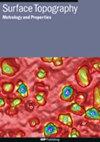在微合金钢焊接熔剂中加入 FeNbC 对通过 SAW 生产的涂层耐磨性的影响
IF 2
3区 材料科学
Q2 ENGINEERING, MECHANICAL
引用次数: 0
摘要
由于全球原材料短缺和价格上涨,人们越来越需要工程解决方案来提高设备和部件的使用寿命和耐用性。因此,本研究旨在结合表面工程和焊接工程,利用埋弧焊(SAW)沉积技术生产富铌涂层。埋弧焊是一种具有成本效益的技术,可实现较高的沉积率,且技术简单,可增强部件的机械性能和抗磨料磨损的能力。本研究涉及在中性商用 SAW 涨潮中添加 5、10 和 15 wt% 的 FeNbC 粉末合金,作为在沉积涂层的微观结构中添加 Nb 的替代方法。通过光学显微镜分析涂层的微观结构(如相的存在)、维氏显微硬度计测定的显微硬度,以及使用橡胶轮式磨耗仪通过质量损失测定的耐磨损性。使用扫描电子显微镜对磨损机制进行了评估。结果表明,可以通过声表面波沉积富含铌的涂层,涂层成功地将显微硬度提高了 110%,耐磨损性也高于所用的基体金属(微合金钢)。所形成的微观结构富含 Fe2Nb 和 NbC,证明了富铌相的形成。此外,磨料磨损的机理在基本金属中主要是塑性磨损,而在添加了高达 15%的 FeNbC 后,则转变为微切削和微刨削磨损。本文章由计算机程序翻译,如有差异,请以英文原文为准。
Impact of incorporating FeNbC into weld flux on the abrasive wear resistance of coatings produced by SAW in a microalloyed steel
Owing to the global shortage of raw materials and an increase in their prices, there is a growing demand for engineering solutions to increase the lifespan and durability of equipment and components. Therefore, this study aims to combine surface engineering and welding engineering to produce a niobium-rich coating using submerged arc welding (SAW) deposition. SAW is a cost-effective technique that allows high deposition rates and technical simplicity, which can enhance mechanical properties and resistance to abrasive wear of components. This research involves the addition of a FeNbC powder alloy in percentages of 5, 10, and 15 wt% to a neutral commercial SAW flux, as an alternative to adding Nb to the microstructure of the deposited coating. The coating was characterized by optical microscopy to analyze the microstructure, such as the presence of phases; microhardness through a Vickers micro-durometer, and resistance to abrasive wear through the loss of mass using a rubber wheel-type abrasometer. The wear mechanisms were evaluated using scanning electron microscopy. The results showed that a Nb-rich coating can be deposited via SAW, and the coatings successfully increased microhardness by up to 110% and resistance to abrasive wear to values higher than the base metal used (microalloyed steel). The microstructure formed was rich in Fe2Nb and NbC, proving the formation of Nb-rich phases. Additionally, the mechanism of abrasive wear was predominantly plastic for the base metal and changed to micro-cutting and micro-plowing after the addition of up to 15% of FeNbC.
求助全文
通过发布文献求助,成功后即可免费获取论文全文。
去求助
来源期刊

Surface Topography: Metrology and Properties
Materials Science-Materials Chemistry
CiteScore
4.10
自引率
22.20%
发文量
183
期刊介绍:
An international forum for academics, industrialists and engineers to publish the latest research in surface topography measurement and characterisation, instrumentation development and the properties of surfaces.
 求助内容:
求助内容: 应助结果提醒方式:
应助结果提醒方式:


